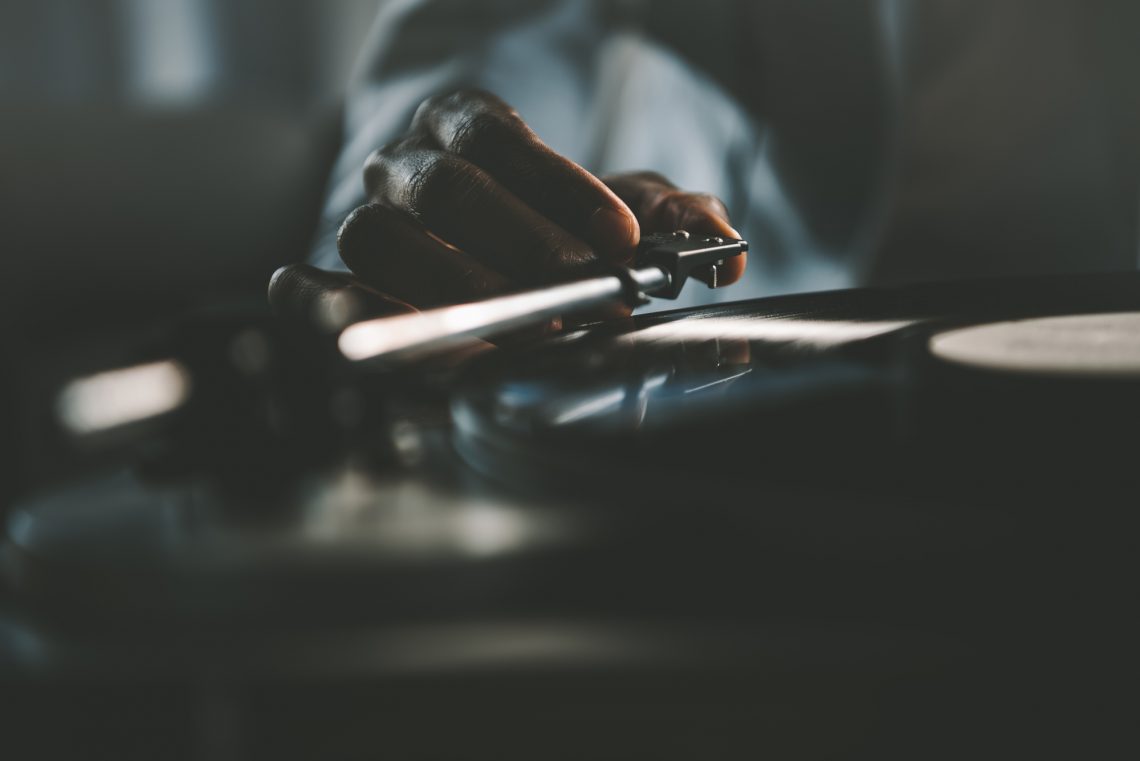How to Make Listening to Music More Enjoyable: Creating the Right Atmosphere Through Your Surroundings, Routine, and Visuals
Music has become such a staple in our lives that we often do not even notice it, taking it for granted when we hear it in the background. Although passively listening to music is better than not listening to it at all, you can turn this activity into a form of leisure and get more fulfillment.
To gain new experiences in life, you don’t necessarily have to go to new places or try bungee jumping. It is enough to just change your routine. In the case of music, it’s relatively undemanding. Below, you can find easy steps and tips that’ll help you to change your daily routine and make your music listening experience more enjoyable.
Bonus for creatives! To find more inspiration in music listening, we’ve also prepared a graphic collection that conveys its aesthetic. Whether you need imagery for content creation or want to enjoy something visually pleasing, check out our collection.
#1 Adjust your space for music listening
Although many people don’t see it as such, listening to music can be a form of leisure, art therapy, and a way to escape the world. However, for this to be the case, you need to prepare your space for this activity.
First and foremost, create a space in your room, apartment, or studio where you wish to spend more time. The interior should be visually pleasing and filled with things that lift your spirit. It can be any form of physical art, decoration, cozy lights, house plants, and aroma diffusers. Also, get yourself comfy furniture and make sure you like the interior color choices.
The acoustics are another important factor. You can improve the sound quality and overall music listening experience by placing speakers in the right position. Speakers usually come with instructions on where to put them for the best experience. However, the general advice is to arrange them in a symmetrical acoustic space, with each evenly positioned on identical stands with identical surfaces.
Note that every object in the room affects the acoustics. Object materials are also crucial, as some of them can diffuse or absorb sounds. A good acoustic environment should combine elements that absorb and diffuse sound.
#2 Get a good pair of headphones or speakers
Many people listen to music at home using their TV with built-in speakers or portable speakers. This might be a good option for passive music listeners; however, for an immersive experience, it’s better to invest in a set of professional full-size speakers. You’ll immediately notice a difference in sound. When choosing one, correlate the size of your space to the size of the speakers. They should match the acoustics and size of your room to produce perfect sound.
If you don’t want to break the bank but still enjoy high-quality sound, invest in headphones. Decent ones aren’t cheap, but they are still much more affordable than professional speakers.
#3 Look for high-fidelity audio
While listening to streaming music services might be a convenient everyday option, the sound quality provided by most of them is not always the best. They tend to compress audio files to make them download faster, limiting the number of sounds we can hear. Therefore, if possible, listen to music in high-fidelity formats. These include WAV, FLAC, and M4A.
You can also go analog to hear more details in songs. Vinyl records tend to provide better sound quality and music listening experience. The only downside is the price tag. Vinyl record players are expensive, as is the equipment required to play music.
#4 Prepare playlists for different occasions ahead of time
Have you ever noticed how some tracks are great for some activities and occasions, but may be a downer for others? That’s because music can trigger various emotional responses and associations that affect overall mood and atmosphere. In addition, the tempo of the music, which corresponds to the listener’s movements, also affects our listening experience. You can notice that party playlists are often dynamic, with tempos building upwards, while playlists for meditation are calm and steady, with even tempos. Therefore, it’s important to have pre-made playlists for various occasions in order to enjoy music to the fullest.
Whether you want to curate a playlist for your personal needs or a particular crowd’s taste, we’ve prepared some simple steps and tips.
Step 1. Define the purpose of the playlist
To begin, think about why you wanted to make a playlist in the first place: to highlight a mood, to change the mood, to impress others, etc. Define the activity, event, or occasion and the theme. Then, think about the audience.
Step 2. Decide on whether the track order is important
If you want to tell a story, where each subsequent song adds to the previous one(s), consider track order. Otherwise, opt for shuffle mode; this will play your music in no particular order.
Step 3. Consider the duration
The duration of your playlist is one of the most important factors to consider. Music that abruptly stops can kill the vibe and force you to search for other songs, instead of enjoying the moment.
Step 4. Add an element of surprise
A good playlist for any occasion should evoke emotion. Whether it’s a playlist only meant for you or for an audience, it’s best to include some gems that will surprise and elevate it beyond other audio collections.
#5 Listen to a complete body of work instead of just a few tracks
Social media platforms, like TikTok and Instagram, have changed the way we consume music and content in general. Our attention spans have shrunk, making it difficult for many to listen till the end of the song, let alone an entire album. However, listening to a complete body of work instead of just a few tracks may change your impression of an artist and their artwork, and bring a whole new level of enjoyment.
Artists put hours of work, dedication, and purpose into the creation of their albums. Only listening to one track or multiple tracks in random order takes away from the overall story. By listening to albums from beginning to end, you can develop the skill to recognize hidden meanings and piece together a story.
#6 Find new music genres outside the ones you like
As with many things in life, sticking to one preference might be comfortable and undemanding. Yet, there’s a good chance you’re missing out on new experiences. That’s why we encourage you to step out of your comfort zone and explore new artists and music genres to add some color to your life.
To make this process less stressful, start exploring genres within the same genre. Yes, you read that right. Genres usually have subgenres. According to Wikipedia, house style music has 50+ subgenres alone. Therefore, if you’re a fan of classic house, you can also enjoy similar music, such as minimal house, acid house, or tech house. If your soul craves more unusual tunes, pay attention to afro house, tribal house, or Latin house. But don’t be too quick to pass judgment. Allow yourself to get used to new sounds.
Another approach is to look up musicians who produced your favorite song and find their other work, or do the same with the music label. If you like their style, you will most likely enjoy their work in different genres.
We’d also recommend trying music you don’t like. People often hear only one or two songs from a genre and decide they don’t like it. Maybe you don’t dislike the genre as a whole, but you haven’t been exposed to the right albums, mixes, and collaborations.
#7 Train active listening to find hidden sounds
We often listen to music passively while working, cleaning, or cooking. This way, we can overlook many layers of the composition, with all the instruments, hooks, tonal changes, and lyrics. By consciously focusing on the tune without engaging in other activities, you can shift to active listening and hear much more than before.
When listening to music becomes your main activity, you’ll hear art that someone has put their soul and meaning into. It can bring you much more pleasure and fulfillment. However, it’s crucial to avoid any distractions. Therefore, while listening to music, avoid doing any household chores or other tasks, close all your apps, and simply enjoy the music.
#8 Discover new music through curated playlists, friends, or events
Last but not least, do not rely solely on your musical taste. Allow others to contribute as well. Music professionals and enthusiasts often compile their own playlists on streaming platforms, such as Apple Music, Spotify, YouTube Music, SoundCloud, and others. Also, let your friends bring something new into your life. Ask them to share their favorite playlists, live shows, or mixes.
Another way to discover new music is by downloading Shazam (an application that can identify tracks using your phone’s microphone) and utilizing it at various events. New music can often be heard at the opening of art exhibitions, at parties, in cafes, shops, on the streets, and before concerts. Take advantage of every opportunity to discover something new!
To sum up
Music fits into our lives anytime, anywhere. Whether we’re celebrating something special, riding an elevator, waiting on a phone line, music is always present in one way or another. Therefore, to pay tribute to music creators and music as an art form, let’s treat it as a separate activity. Use our tips and tricks to get more out of listening to music, and take advantage of our visual collection to get inspiration and complement your music-related projects.
Enjoy our other articles:
Your Guide to Integrating Audio Into Brand Communication [Infographic]
Generating Music with AI: How it Works
Guide on Choosing Music for Ads, Videos, Podcasts [Music Collections Included]











